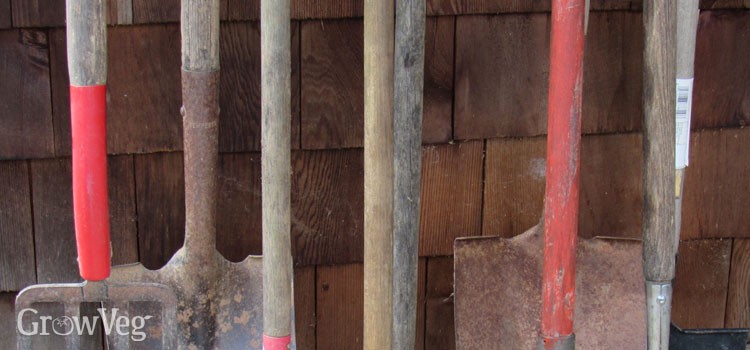Taking care of your yard tools is an essential part of gardening, and often, the wooden handles are overlooked. Just like the blades, the handles of your spades, hoes, and rakes require attention to ensure they last for seasons to come. Proper maintenance of wooden handles not only prolongs the life of your tools but also makes gardening a more comfortable and enjoyable experience. Let’s delve into how to effectively care for your yard tool handles.
Cleaning Your Yard Tool Handles
Before you put your tools away for the season, or even as part of regular maintenance, cleaning the wooden handles is crucial. Start by gathering all your tools from around the yard. Whether it’s after a busy summer in the vegetable garden or before winter storage, a good cleaning session is beneficial.
You have a couple of options for cleaning. For a thorough clean, especially if it’s not too cold, use hot, soapy water and a stiff brush to scrub off accumulated dirt and grime. If a wet cleaning isn’t feasible, or for quicker maintenance, a metal brush and a damp rag work effectively. The aim is to remove any soil, sap, or debris that has built up in the wood’s crevices.
While cleaning, pay attention to the handle’s surface. If you find any splinters or rough patches, use fine sandpaper to smooth them out. This not only improves the feel of the tool in your hands but also prevents potential injuries.
Consider adding a personal touch for easy identification. Using brightly colored tape or paint to mark tool handles is a practical tip, especially if you garden with others or have a large collection. This simple step helps in quickly spotting your tools and preventing them from being misplaced in the garden.
Oiling and Protecting Wood Handles
Once the handles are clean and completely dry, the next step is oiling. Oiling wood handles is vital for protecting them from moisture and dirt, and preventing them from becoming dry and brittle over time. For the best results, bring your tools into a warm space, as oil penetrates wood more effectively at room temperature.
When it comes to choosing an oil, options like linseed oil and tung oil are popular choices as they dry relatively quickly. However, household oils such as coconut oil or walnut oil can also work effectively.
To apply the oil, saturate a clean cloth with your chosen oil and generously apply it to the wooden handle. Allow the oil to soak in for about ten minutes, and then wipe off any excess with a dry cloth. For older handles, or those that have been exposed to harsh sun, a second or even third coat of oil might be necessary to fully rejuvenate the wood. The transformation after oiling is often remarkable, bringing back the natural luster and smoothness of the wood.
Don’t forget about the metal parts of your tools. Applying a coat of oil to the metal components is also beneficial. Even simple vegetable oil from your kitchen can be used to wipe down metal parts, helping to prevent rust and keep your tools looking their best.
Taking the time to care for your yard tool handles might seem like a small task, but it significantly contributes to the longevity and usability of your gardening equipment. Beyond the practical benefits, there’s a simple pleasure in using well-maintained tools. The smooth feel of an oiled wooden handle in your hand enhances the gardening experience, making each task a little more enjoyable. By following these simple steps, you can ensure your yard tools are always ready for action, season after season.



